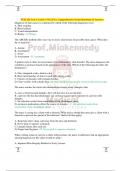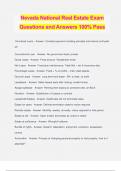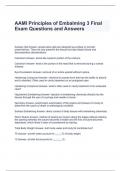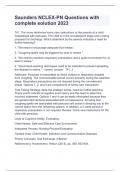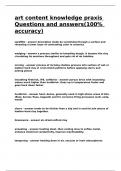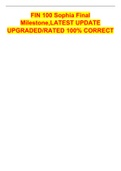Tentamen (uitwerkingen)
NUR 155 Test 3 (Crisis 3 NCLEX), Comprehensive Exam Questions & Answers
- Vak
- Instelling
NUR 155 Test 3 (Crisis 3 NCLEX), Comprehensive Exam Questions & Answers -Diagnosis of skin cancer is confirmed by which of the following diagnostic tests? A. Skin scraping B. Blood culture C. Visual interpretation D. Biopsy - D. Biopsy The ABCDEs method offers one way to assess skin lesions ...
[Meer zien]
